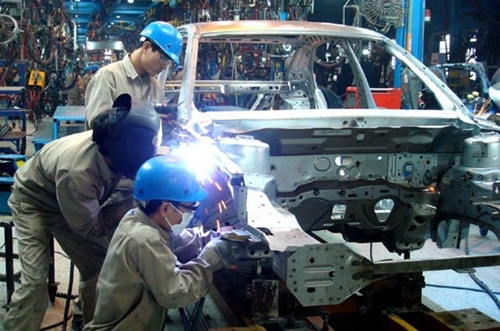Supporting industry needs to muscle up

illustration photo
“The current poor performance of hi-tech industries’ supporting industries were chiefly due to lack of hi-tech industries’ lucid development orientations,” Ho Chi Minh City People’s Committee deputy chairman Le Manh Ha acknowledged.
Ho Chi Minh City allegedly takes the lead countrywide in supporting industry development.
In reality, hi-tech industries’ supporting industries cover three main areas of parts and accessories, specialised materials and supporting facilities, software and services.
These industries, however, remain less-developed at present, according to Ministry of Industry and Trade’s Department of Heavy Industry deputy head Pham Anh Tuan.
For instance, in the materials area the chemical and metallurgical industries still lag behind actual development needs.
Ha said Ho Chi Minh City had envisaged bolstering supporting industry development in three hi-tech areas as mechanical engineering, information technology and chemical pharmaceutical industries but at present each area still needed a development focus.
According to District 9 Hi-tech Park Management Unit deputy head Le Bich Loan, in 2012 the hi-tech park generated export value of $3.2 billion, tantamount to 10 per cent of the city’s total export value. However, added value only fetched 16-17 per cent due to poor supporting industries.
In the near term, to uphold hi-tech supporting industries development, the city’s Hi-tech Park Management Authority has set aside 14 hectares for supporting industries with connectivity to industrial parks in Ho Chi Minh City, Dong Nai and Vung Tau city.
Hi-tech parks also offer policy incentives to investors in diverse fields of biotechnology, electronic chipsets, precise engineering, automation and new material technologies.
Particularly, businesses producing items in hi-tech industries’ supporting industries will be given preferential corporate income tax in the first 15 years. Of which, the first four years will be tax free, hiking to 5 per cent in the next nine years and 10 per cent in two remaining years before reaching 25 per cent.
What the stars mean:
★ Poor ★ ★ Promising ★★★ Good ★★★★ Very good ★★★★★ Exceptional
Latest News
More News
- EVN launches major power infrastructure projects nationwide (December 19, 2025 | 18:17)
- VAL inaugurates second production line to meet domestic animal feed demand (December 19, 2025 | 16:37)
- Sun Group pioneers urban tram system in Phu Quoc (December 19, 2025 | 15:00)
- Seven major projects launched to drive Hanoi’s next growth phase (December 19, 2025 | 14:00)
- Securing capital and efficiency for Vietnam’s 2026-2030 growth ambitions (December 17, 2025 | 10:00)
- Vietnam bucking trend in the global M&A landscape (December 16, 2025 | 14:20)
- HDS Summit spotlights Vietnam’s rising role in regional supply chains (December 16, 2025 | 08:00)
- Kolon signs $48 million airbag supply deal with Autoliv (December 15, 2025 | 18:14)
- National Assembly approves Vinh–Thanh Thuy expressway project (December 15, 2025 | 18:02)
- Quang Tri green-lights $1.59 billion LNG-fired power project (December 15, 2025 | 17:59)


















 Mobile Version
Mobile Version